Tag Archives:from the library
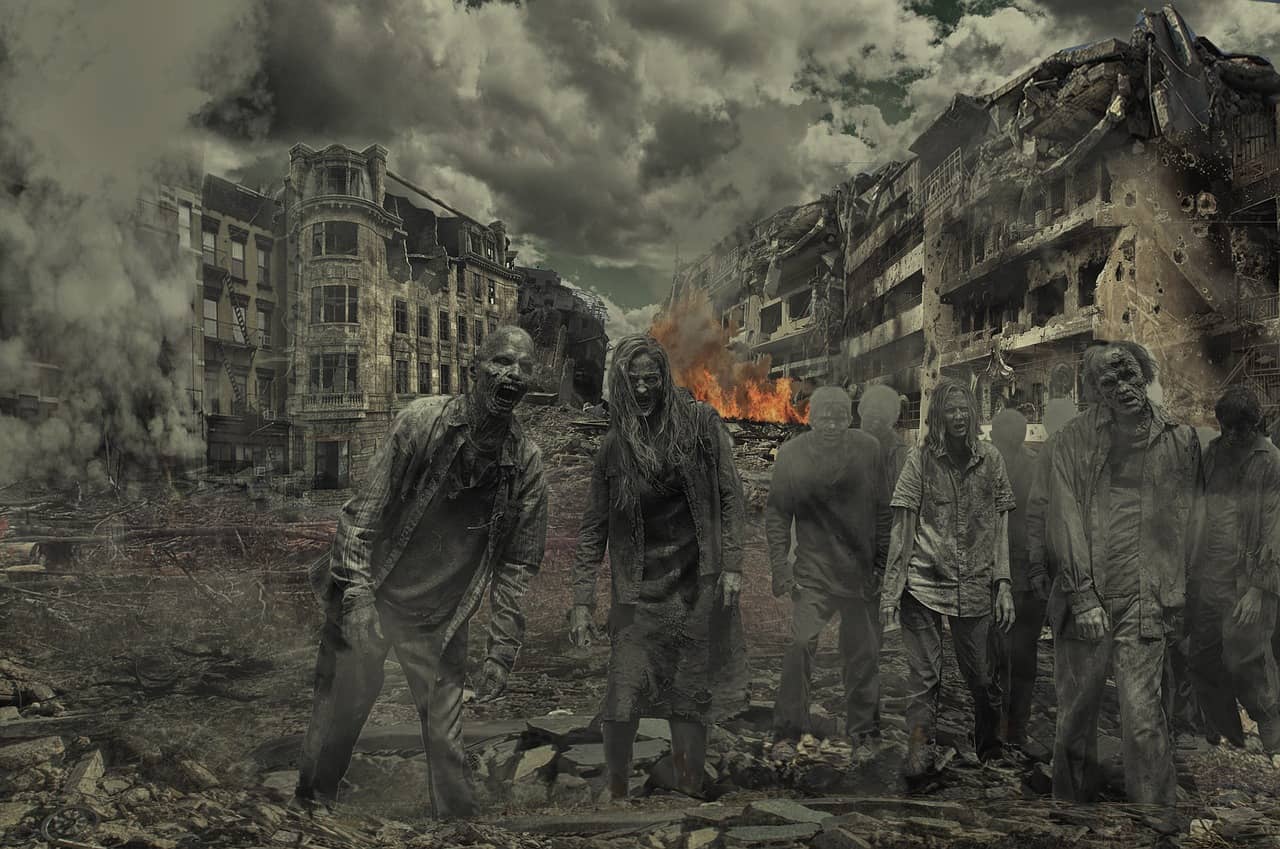
2
JulAt Least There Were No Zombies
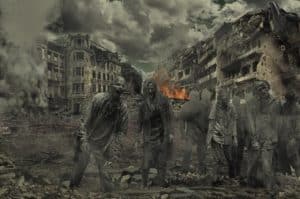 Wow… that really happened. We experienced a worldwide pandemic, including quarantines, shutdowns of businesses and services, and worst of all, millions of deaths. We made it through the worst of it in the US, but the threat remains, and we struggle to recover. In the past couple of centuries plenty of authors and filmmakers have imagined such a scenario, and in retrospect I find it fascinating to look at what they got wrong and what they got right.
Wow… that really happened. We experienced a worldwide pandemic, including quarantines, shutdowns of businesses and services, and worst of all, millions of deaths. We made it through the worst of it in the US, but the threat remains, and we struggle to recover. In the past couple of centuries plenty of authors and filmmakers have imagined such a scenario, and in retrospect I find it fascinating to look at what they got wrong and what they got right.
The History Channel’s 2010 docudrama After Armageddon speculates on how a global pandemic would pan out serving as a warning to humankind. In their scenario, as in many others such as The Walking Dead, gridlock turns into a huge problem as citizens try to flee cities, and as a result, the infrastructure for shipping goods and fuel collapses. Indeed, we did see major delays in transportation and shipping, and hence shortages and stockpiling of goods like toilet paper. “Only a fraction of people go to work,” not due to shelter in place orders and the ability to work from home, but because they want to be with their families at the end of the world. The sick overwhelm hospitals (although mask-wearing remains sporadic) and rather than stepping up as heroes, medical professionals jump ship, and then hide their skill sets.
Of course fiction tends to exaggerate for artistic effect, and stories about outbreaks and survival make for thrilling novels and movies. Instead of depicting sufferers sadly dying alone at home or in hospitals they often show them turning into zombies. In Richard Matheson’s I am Legend and its eponymous film adaptation, (as well as The Last Man on Earth with Vincent Price and Omega Man), the sick become vampiric mutants. In the movies 28 Days Later, Dawn of the Dead and (my favorite) Train to Busan, the undead stop at nothing to attack humans.
Likewise, stories overestimate the breakdown of society and its rapid descent into chaos. After Armageddon suggests merely four days of food shortages before the outset of anarchy, including widespread killing and looting. In World War Z by Max Brooks and the movie based on it, rioting kills more people than the illness itself. In Stephen King’s The Stand and the 1994 and 2020 miniseries based on it, as well as the Walking Dead series, the survivors, pitted against each other for survival, must choose between good and evil – preying on others to get by versus helping each other, hoping to restore some semblance of normalcy.
A few predictions did match the reality of COVID-19. In World War Z the pandemic begins in China, and in Carriers, Asian Americans fall victim to murder in response to “bringing” the sickness. We learned that the coronavirus spread from animals to humans, and likewise in the film Outbreak, partially inspired by Richard Preston’s nonfiction book The Hot Zone, a fictional ebolavirus comes from an African capuchin monkey (even though capuchins do not live in Africa). In 28 Days Later a chimpanzee first carries the infection. As with COVID, the highly contagious and life threatening viruses have high fatality rates and no treatments or cures. The strain in Outbreak mutates into an airborne version, resulting in the best scene in the film: a man having a coughing fit in a crowded theater, showing respiratory droplets in slow motion flying out of his mouth, some landing in the open mouth of a laughing woman. He stumbles into the lobby sweating and coughing on everyone without covering his mouth. The most spot-on line comes from the movie Carriers, “Avoid the infected at all costs; their breath is highly contagious… disinfect anything they’ve touched in the last 24 hours.”
In pandemic stories, survivors persist with the goal to find a cure. In The Walking Dead , Contagion and Outbreak they hold out hope that the CDC in Georgia has Dr. Fauci types searching for a “serum.” The response to COVID-19 demanded innumerable scientists around the world working full throttle to develop a vaccine, and government support to support the research and coordinate vaccination rollouts. With artistic liberties, fictional tales may feature a lone hero who manages to find a cure in a timely manner, like Robert Neville in I am Legend.
Predictably, most pandemic fiction ends with a somewhat happy ending. Given that, as predicted by After Armageddon, all communications and utility infrastructures eventually fail, meaning no internet, phones, electricity or running water, those remaining on earth must start over, going back to basics and living off the land. They relearn skills like canning, gardening, and perhaps even fermenting alcohol, like those of us who baked our own bread during quarantine. Our hero Neville brings his cure to one such survivor colony in Bethel, Vermont.
While we recover from the COVID-19 epidemic, move toward the “new normal,” and mourn the dead, we may also take heart in knowing that things could have been far worse. By and large, law abiding citizens complied with mandates, stayed home, practiced social distancing, and wore masks. In Outbreak, military-imposed quarantines and martial law result in backlash. Contagion also shows rebellion against quarantine, along with the emergence of conspiracy theories and the exposure of malevolent or incompetent authorities. In real life, crime rates in most categories dropped as people stayed home, and the masses did not resort to killing each other in the streets. Granted, the fictionalized pandemics tended to manifest in ways far worse and more widespread than what we experienced; fortunately we learned lessons and may be better prepared for future outbreaks. Above all, let’s give thanks that we didn’t have zombies.
Lydia Sampson is the Assistant Director at the Morrill Memorial Library in Norwood, MA. Look for her article in the July 1, 2021 issue of the Transcript and Bulletin.
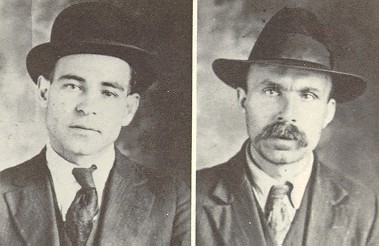
24
JunSacco and Vanzetti
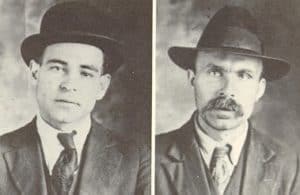 I was lucky enough to have been chosen to attend, and recently graduate from, the Massachusetts Municipal Association’s Certificate in Local Government Leadership program. This educational certification program, offered through the Association in conjunction with Suffolk University to municipal employees across the state, taught me about many facets of municipal government. We covered topics ranging from human resource management, to municipal leadership, to municipal finance, and tackled tough subjects like local police reform, and intermunicipal relationships. The certificate program was an enlightening experience, and I got to learn from some of the top leaders in municipal government today, and I’m beyond thankful to the Town of Norwood for their support and the opportunity to attend the program.
I was lucky enough to have been chosen to attend, and recently graduate from, the Massachusetts Municipal Association’s Certificate in Local Government Leadership program. This educational certification program, offered through the Association in conjunction with Suffolk University to municipal employees across the state, taught me about many facets of municipal government. We covered topics ranging from human resource management, to municipal leadership, to municipal finance, and tackled tough subjects like local police reform, and intermunicipal relationships. The certificate program was an enlightening experience, and I got to learn from some of the top leaders in municipal government today, and I’m beyond thankful to the Town of Norwood for their support and the opportunity to attend the program.
However, I will admit that during one of my assignments, I found myself going a bit off course, and becoming fascinated by a somewhat off topic subject. It was during one of my assignments, in which I was tasked to explore the history of my local community (Braintree) that I unearthed a local historic event of great significance and international magnitude that I, despite living in the Norfolk County area my entire life, had never heard of before. I found myself mesmerized by this new (to me) landmark local historical event, and delved further and further into the events history and the details and drama that surrounded it. (Don’t worry, I got back on track eventually!) That historic event was known as the Sacco and Vanzetti Trial.
As chronicled in the documentary Sacco and Vanzetti, which you can watch now though the library’s Kanopy streaming app, Nicola Sacco and Bartolomeo Vanzetti were Italian immigrants who immigrated to the U.S. in 1908. Like many immigrants, both came to America seeking new opportunities, and were allured by the promise of the American Dream. However, the then recent Russian Revolution, which saw the Russian Empire turn into the Union of Soviet Socialist Republic (U.S.S.R.), created what was known as the “Red Scare” in the hearts of many Americans. The Red Scare was brought about by a general fear that a communist revolution could happen in America, as it did in the Soviet Union. The Red Scare also instilled in the American public a fear of foreigners, in particular Italian Immigrants, who not only were coming to America at an accelerated rate during this time, but who were often less educated (meaning they were competing for jobs and housing with other American immigrant communities) and held a religious affiliation to Roman Catholicism, which not only was a religious minority in America during the time, but also clashed with the Protestant American majority.
On April 15th, 1920, at the Slater Morrill Shoe Company factory on Pearl St. in Braintree (now Pearl Plaza), two men, Alessandro Berardelli, a security guard, and Frederick Parmenter, a paymaster (an agent whose duty is to make payments to workers) were robbed and killed while handling two steel boxes of the company’s payroll. Berardelli was shot four times, and Parmenter was shot two times, one time in the chest, the other in the back, presumably while he was trying to flee. The assailants fired at the workers of the shoe company, and sped off in a Buick with the money. The police had a few suspects at the time, but ultimately chose Sacco and Vanzetti as their prime suspects in the case. Sacco and Vanzetti were chosen based on the rather dubious facts that Sacco owned a gun similar to what the robbers used, and both were found in a car shop getting a car from a repair shop that was seen near the South Braintree crime scene. Many historians believe that they were chosen because they were Italian minorities, and their limited English skills made it hard for them to defend themselves, and due to the fact that they were open anarchists who opposed all forms of government.
Sacco and Vanzetti’s trial at the Dedham court house drew little attention, but, as a source from our Gale in Context U.S. History database explains, “over the next 6 years Moore, William G. Thompson (who became chief defense counsel after Moore left), and the Sacco-Vanzetti Defense Committee (an array of anarchists, Boston free-thinkers from prestigious families, and middle-class liberals and radicals) reshaped the public image of the case into a political and ideological rather than a legal controversy… This strategy increasingly mobilized public sentiment as years passed and doubts multiplied regarding portions of the evidence. “The trial began to morph beyond an issue of crime and innocence, and instead became about racial and political persecution. The presiding Judge, Webster Thayer, was criticized both for his bias both on and off the bench, for denying Sacco and Vanzetti’s Defense Attorney’s motions, berating the defense attorney and the two men (he said he would “get them good and proper”) and making statements about Sacco and Vanzetti’s political affiliation (calling them “Bolsheviki!”). The trial became noticed by not only the nation, but the world, with strikes and protests in favor of Sacco and Vanzetti’s innocence and release in countries like Germany, England, Australia, Paraguay and Mexico, to name a few. None of this did them any good, however, and ultimately the Massachusetts Supreme Judicial Court affirmed the convictions and on April 9th 1927, Judge Webster Thayer denied them a retrial, and sentenced Sacco and Vanzetti to die in the electric chair.
So much about this case resonated with me, and I became quite ashamed that I had never heard of this case before. Ironically, it took a great program like the MMA’s Local Government Leadership program, in which students learn how to be better municipal leaders and servants, for me to unearth a case that represented in essence the very antithesis of what we were learning in class. We all know the saying, “those who cannot learn from history are doomed to repeat it,” and though I can only capture a small portion of the Sacco and Vanzetti drama in this article, I encourage you to explore the details and learn further about it. Whether you are a newcomer to the trial (like me) or are well acquainted with it, it serves as a valuable reminder of the dangers of fear, xenophobia, and political prejudice that can taint our hearts and our political systems if left unchecked. I’ll leave you with a final excerpt taken from an article in our database about the case…
“The Sacco and Vanzetti case remains a tragic chapter in United States history. The case has come to stand for the type of racial bigotry and breach of human rights the United States Constitution is to protect against. The legacy of Sacco and Vanzetti serves to protect others from racial and political prosecution.”
Want to learn more about the case?
- Check out our U.S. History Database
- Watch the Sacco and Vanzetti Documentary on Kanopy
- Borrow the DVD Sacco and Vanzetti movie from the library
Brian DeFelice is the Information Technology Librarian at the Morrill Memorial Library in Norwood, MA. Look for his article in the June 24, 2021 issue of the Transcript and Bulletin.

17
JunThe Glorious Gardner Museum
 This year, Netflix released a historical documentary that delves (once again) into the most mysterious, if not outrageous, art heist in history. This Is a Robbery: the World’s Biggest Art Heist was directed and produced by two Massachusetts natives, Colin and Nick Barnicle, sons of well-known columnist Mike Barnicle.
This year, Netflix released a historical documentary that delves (once again) into the most mysterious, if not outrageous, art heist in history. This Is a Robbery: the World’s Biggest Art Heist was directed and produced by two Massachusetts natives, Colin and Nick Barnicle, sons of well-known columnist Mike Barnicle.
The short series (4 episodes) details the beginnings of the Gardner, including the vision that Mrs. Gardner had for this Venetian Palace, built on top of a filled-in swamp and destined to become one of the most famous museums in history. A museum with as much character as its creator, the Isabella Stewart Gardner’s collection was to remain exactly as Mrs. Gardner had left it. And remain the same it did, until the wee hours of March 18, 1990.
Though there is nothing new to say about the robbery; art lovers and Boston residents can’t stop speculating, going back over all of the evidence, hoping against hope that something will “click” and the whole mystery will be solved and that all thirteen pieces will be returned. Every so often we hear a snippet or two about the Gardner robbery, which sets off a big hoopla and sensation, garnering national and even international attention. And then… crickets. Where the heck can half a billion dollars worth of art be? Yes, the stolen pieces are now worth half a billion dollars! Wandering around the Isabella Stewart Gardner museum and looking at the empty frames gives one that haunting feeling in the pit of the stomach that is experienced when listening to Celine Dion’s “My Heart Will Go On.” For the art must still be; the alternative is too grim for words and depresses even the most casual art lover.
Despite the missing works, there is still plenty to see at the Gardner Museum, and if you have never visited, you are in for a unique experience. You can go to the museum’s website to learn all about the theft before you visit. For the actual visit, The Morrill Memorial Library provides $5 passes to the museum for Norwood residents.
The Morrill Memorial Library and Minuteman Library Network also hold several titles that may be of interest for anyone who would like background information on the ISG. These are just a few of the titles available:
- Isabella Stewart Gardner Museum: A Guide (2017)
- Stolen: The Gardner Theft (2018)
- The Gardner Heist: The True Story of the World’s Largest Unsolved Art Theft (2010)
- The Art Forger, by B. A. Shapiro (2012)
One of the most interesting aspects of the Barnicle brothers’ documentary are the interviews with many of the people who either worked for the museum or were on the case. One of these interviewees is Anne Hawley. Hawley was the director of the Isabella Stewart Gardner Museum at the time of the robbery. Not only was Hawley the first woman to ever hold that position, she had also held it for only six months when the robbery took place. Watching the old footage of the days after the heist, I felt that she held it together amazingly, considering the responsibility laid upon her shoulders. In fact, Anne Hawley summed up the whole incident beautifully when she said, “the empty frames are there, waiting for the art to return to its rightful place.” And so we wait.
Carla Howard is the Senior Circulation and Media & Marketing Assistant at the Morrill Memorial Library in Norwood, MA. Look for her article in the June 17, 2021 issue of the Transcript and Bulletin.

14
JunRooting for Women at the Olympics
 One of the things I was looking forward to in 2020 was the Summer Olympics. I wasn’t allowed to watch a lot of TV growing up but my mom made an exception for the Olympics. I loved the spectacle of the opening ceremonies and learning about the athletes and their home countries. During the summer there was no school to interfere during the day or prevent me from staying up late. Watching the 1984 Summer Olympics in our tv room with the shades drawn to keep out the heat is a fond memory. The 1998 Summer Olympics were after school started in September but the 1984 and 1988 Winter Olympics were over February vacation so I spent a lot of time watching them.
One of the things I was looking forward to in 2020 was the Summer Olympics. I wasn’t allowed to watch a lot of TV growing up but my mom made an exception for the Olympics. I loved the spectacle of the opening ceremonies and learning about the athletes and their home countries. During the summer there was no school to interfere during the day or prevent me from staying up late. Watching the 1984 Summer Olympics in our tv room with the shades drawn to keep out the heat is a fond memory. The 1998 Summer Olympics were after school started in September but the 1984 and 1988 Winter Olympics were over February vacation so I spent a lot of time watching them.
There have been many books written about the Olympics in general and American athletes specifically. Three about Americans who competed in the 1936 Berlin Olympics were quite popular, The Boys in the Boat: Nine Americans and Their Epic Quest for Gold at the 1936 Berlin Olympics by Dan Brown, Fast Girls: a Novel of the 1936 Women’s Olympic Team by Elise Hooper and Unbroken: a World War II Story of Survival, Resilience, and Redemption by Laura Hillenbrand. Unbroken, which was made into a movie, is primarily about Louis Zamperini’s time as a Japanese prisoner of war, but it also covers his competition in the 1936 Olympics. These books feature athletes who had not spent their lives participating in or perfecting a sport, which is quite different from the athletes we see competing today. Most began training and competing for a spot on the U.S. team for the first time less than four years after they began participating in the sport. Learning about these athletes led me to think about how the “Modern Olympics” have changed over the past 125 years, particularly for women.
Title IX was signed into law by President Richard Nixon in 1972. It states, “No person in the United States shall, on the basis of sex, be excluded from participation in, denied the benefits of, or be subjected to discrimination under any education program or activity receiving Federal financial assistance.” Title IX had a significant impact on sports opportunities for females at the high school and college level. In 1972, there were 31,000 female athletes participating in college sports in the United States; today there are over 200,000. The American women who participated in the Olympics before and immediately after the passage of Title IX found ways to pursue their interest in a given sport in spite of a lack of athletic opportunities for them. Nor did they have many female athlete role models; aside from tennis and golf there were only a few short-lived professional sports for women until the 1990s. Ironically, although tennis and golf were among the first Olympic sports for women in 1900 women’s golf was dropped after that year and not returned until 2016. Women’s tennis was dropped after 1924 and returned in 1988.
Since I am not athletic and women were competing in the sports I was primarily interested in watching: gymnastics (1928), swimming (1912), and diving (1912) in the summer, and figure skating (1908), and skiing (1936) in the winter, I didn’t think about how many sports they weren’t competing in. Like many girls my age I had a Dorothy Hamill style haircut for a while and I remember Mary Lou Retton on my Wheaties box after the 1984 Summer Olympics. The 1992 movie A League of Their Own introduced me to the All-American Girls Professional Baseball League of the 1940s. By the time the 1996 Olympics were held in Atlanta, I was much more aware of gender inequity for women in sports. In many ways women became the face of the 1996 U.S. Olympic team with gold medals won by the women’s basketball, gymnastics, soccer, and softball teams. Soccer and softball were new sports for women that year. Some viewers were aware that several of the members the basketball team would be playing professionally the following year in the recently created WNBA. America women also won individual gold, silver, and bronze medals and team gold medals in two swim relays, and two track and field relays.
As I always do when writing a column, I did some research. Four books I found very informative are: Outstanding Women Athletes: Who They are and How They Influenced Sports in America by Janet Woolum, Getting in the Game: Title IX and the Women’s Sports Revolution by Deborah L. Brake, The National Team: the Inside Story of the Women who Changed Soccer by Caitlin Murray, and for younger readers Grace and Glory: a Century of Women in the Olympics edited by Siobhan Drummond and Elizabeth Rathburn. Fire on the Track: Betty Robinson and the Triumph of the Early Olympic Women by Roseanne Montillo provides a non-fiction account of the story told in Fast girls. I also found the Olympics and NCAA websites informative though difficult to navigate.
Track and field, which was Betty Robinson’s sport, was added in 1928. However, when several competitors collapsed after the 800-meter race, an Olympic ban on women’s races of longer than 200 meters was instituted for many years. Women’s volleyball was added in 1964, basketball and rowing in 1976, field hockey in 1980, cycling and marathon in 1984, and ice hockey in 1998. I was also curious about the number of competitors at various Summer Olympics. Overall numbers were sometimes not as large as I expected due to boycotts in the 1980s; the U.S and several Western European nations boycotted the 1980 Summer Olympics in Moscow and the USSR boycotted the 1984 Summer Olympics in Los Angeles. In 1912 there were 2,400 athletes, only 48 were women. In 1928, there were 2,800 athletes, 277 were women. In 1936, of 3,900 athletes, 331 were women. In 1972 just over 7,000 athletes competed, 1,000 of them were women. In 1984, of the almost 7,000 athletes, 1,500 were women. By 2016, of the 10,300 athletes, 5,000 were women.
I also looked at digitized copies of NHS yearbooks from some of the Olympic years between 1972 and 2016 to see how what sports are available to girls here in Norwood has changed. Tiot does not include spring sports so I was not able to learn about lacrosse, softball, or tennis. In 1972, there were girls’ teams for basketball, field hockey, gymnastics, and swimming. By 1980 soccer and volleyball had been added. Track and cross-country have been co-ed some years and separate other years. By 2004 swimming had become co-ed and there was a girl’s ice hockey team.
At the time of this writing the opening ceremonies of the 2021 Summer Olympics are scheduled for July 23 in Tokyo. Spectators from outside of Japan have been banned due to COVID-19 concerns and many countries have issued travel advisories for their athletes. It has been almost 50 years since Title IX was signed into law. Inequities remain for women in sports, particularly at the coaching level. Inequities exist at all levels for BIPOC and LGBTQ+ athletes. In recent years, athletes at the professional and collegiate levels have become more vocal about speaking out against the inequities they and their fellow competitors face.
Victoria Andrilenas is a Reference Librarian at the Morrill Memorial Library in Norwood, MA. Look for her article in the June 11, 2021 issue of the Transcript and Bulletin.

4
JunQuiet Power
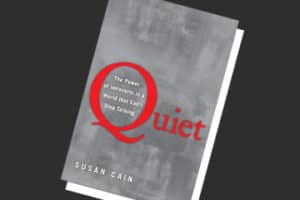 While perusing books to read on the Libby overdrive app, I came across a book that was simply titled Quiet by Susan Cain. In a sometimes hectic world, this seemed appealing. On closer look, its extended title was The Power of Introverts in a World That Can’t Stop Talking. Now it was even more appealing since I readily identify on the side of introversion.
While perusing books to read on the Libby overdrive app, I came across a book that was simply titled Quiet by Susan Cain. In a sometimes hectic world, this seemed appealing. On closer look, its extended title was The Power of Introverts in a World That Can’t Stop Talking. Now it was even more appealing since I readily identify on the side of introversion.
Susan Cain, a self-professed introvert herself, begins her book with the story of Rosa Parks who titled her own autobiography, Quiet Strength. Parks was said to be timid and shy, but to have the “courage of a lion.” Cain asks, “Why shouldn’t quiet be strong?” and “What else can quiet do that we don’t give it credit for?”
Reaching back again into history, Cain presents the relationship between President Franklin and Eleanor Roosevelt. As Cain puts it, the president was “bold and buoyant” and as comfortable with people as Eleanor was cautious. “He had bravado, and she had empathy. Each had strengths the other craved.”
Cain is quick to point out that one shouldn’t assume that all introverts are shy or unfriendly. Actually, most are not either one. Introverts do, however, need less stimulation than extroverts to function well. Introverts respond to things slowly and deliberately whereas extroverts are likely to tackle assignments quickly. In Cain’s words, “One third to one half of Americans are introverts in a country that is among the most extroverted of nations.”
Cain spent over 10 years training people from all walks of life in negotiation skills. She says in her book, Quiet, that this included helping them identify their own personalities and making the most of them. Many of these cases are discussed at length in her book.
Susan Cain went on to write a second book, Quiet Power: The Secret Strengths of Introverts. While her book, Quiet was meant for adults, this is a guide for children and teens. It focuses on school, friendship, family life and extracurriculars. She shares her own experiences of being an introverted child and teen and making her mark in her own quiet way.
At the end of Quiet Power, Cain has two chapters dedicated to hints for teachers and parents dealing with introverted students and children. This is very helpful for anyone concerned about a child or teen being too introverted.
Mari Olsen Laney, Psy.D, also chose to write about the world of introverts in The Introvert Advantage: How to Thrive in an Extrovert World. Interestingly, Dr. Laney made a career change in her 30’s from a children’s librarian to a psychotherapist. She claimed she wanted to work on a more personal level with people. It was then that she discovered and recognized that she, herself, was an introvert and that her husband was an extrovert. Reading both Laney and Cain’s books are especially helpful to any introvert who has a personal relationship with an extrovert.
Dr. Laney’s book is very extensive and covers a lot of ground, both personal and scientific. She gives many examples of cases she has had in her psychotherapy career.
The Introvert’s Edge: How the Quiet and Shy Can Outsell Anyone by Matthew Pollard addresses introverted people who are talented in a certain trade or discipline but lack the ability to sell their services because of their introversion.
Pollard, himself, like Laney and Cain, identifies as an introvert. He graduated high school with a sixth-grade reading level because of a visual disability and went to work for an engineer who was a real estate agent. Although, the engineer was good at his trade, his introverted personality was holding him back in sales. Pollard outlines in his book a simple process of connecting with clients to sell a person’s product regardless of whether the sales person is introverted or extroverted. At the same time, he recognizes that introverted people are more challenged in a sales career.
All these books include a test to see if the reader is an introvert or extrovert. They are fun to do, especially if one is not sure where one falls in the range. Personally, I never felt inferior having an introverted personality, so I wouldn’t approach these books as self-help books. I can see, though, how someone could. I did find them interesting and inspiring, and they validated my belief that a quiet and introspective person does not equate to being inferior or unaccomplished.
Susan Cain ends the introduction to Quiet by saying, “if there is one insight you take away from this book, I hope it’s a newfound sense of entitlement to be yourself.” Indeed.
Norma Logan is the Literacy Volunteer Coordinator at the Morrill Memorial Library in Norwood, MA. Look for her article in the June 3, 2021 issue of the Transcript and Bulletin.
